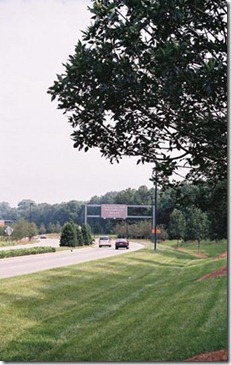He was midway through his 10-year tenure on the RDU Airport Authority when I met second-generation Raleigh-native and developer Smedes York in 1990. At 6’ 5”, the former Mayor of Raleigh and NCSU basketball player wasn’t hard to miss.
I remember how warmly he wished me well just six months into my challenge to jump-start Durham, North Carolina’s first community marketing organization destined within just a few years to help fuel the largest market share of visitors drawn through the airport.
Aided by research, I’m able to recall how Smedes led the charge just about the time of my arrival in Durham 23 years ago, to create dramatic landscaped entries to the jointly-owned airport that cement spectacular first and last impressions of North Carolina for travelers as well as for the co-owner communities of Durham and Wake counties and the cities of Durham and Raleigh.
The Authority governing the airport, which is located midway between Durham and Raleigh, has been served through the years by a grandfather-father-son legacy of construction-developers who understood the importance of appearance, none more than Durham native Robb Teer, currently immediate past chair and his famous grandfather, the late Nello Teer, whose company laid the airports runways in 1939.
Smedes’ father Willie, who immediately preceded him on the Airport Authority, famously led the charge to remove all outdoor billboards on airport property. More than a decade earlier during a stint as head of the state agency overseeing tourism and economic development he had learned that billboards were a blight on trees and other elements of North Carolina’s sense of place and attractiveness for economic development.
Top American Airlines executives flying in to place a then-hub at RDU a few years before I arrived had emphatically reinforced the importance of trees as central to North Carolina’s unique scenic character and economic development potential when they met Smedes and recently-retired airport director John Brantley, both engineers by training.
This was also not lost on Durham officials who had already enacted a communitywide ban on outdoor billboards and were in the process of creating a best-practice overlay to protect the tree-lined visual character of a span of I 40, which was nearing completion, as it leads through their community to and from the airport which is immediately east of Durham.
In 1987, less than two dozen months before my arrival, RDU officials saw the reaction to some modest plantings placed at exits to and from the airport in advance of a US Olympic Festival co-hosted by surrounding cities and counties, so the Authority used funds of its own to add spectacular landscaped hills and dales to the FAA-funded creation and rerouting of roadways and bridges leading into and through the airport.
RDU followed a best-practice landscaping plan created locally and overseen by Willie Hood, a principle at Jerry Turner & Associates, and his associate and JTA VP Lynda Harris and they extended the landscaping to parking areas as well.
To make it all possible, control of the area was passed by NCDOT to RDU and then back during a time when my friend, the legendary Bill Johnson was State Roadside Environmental Engineer and also creating North Carolina’s award-winning scenic byway and wildflower programs.
The result is arguably the most dramatic gateway impression made by any airport in the world, something unfortunately lost today on NCDOT and the way it maintains the other gateways that carry the more than 80% of travelers who arrive and depart the state via highways.
No comments:
Post a Comment